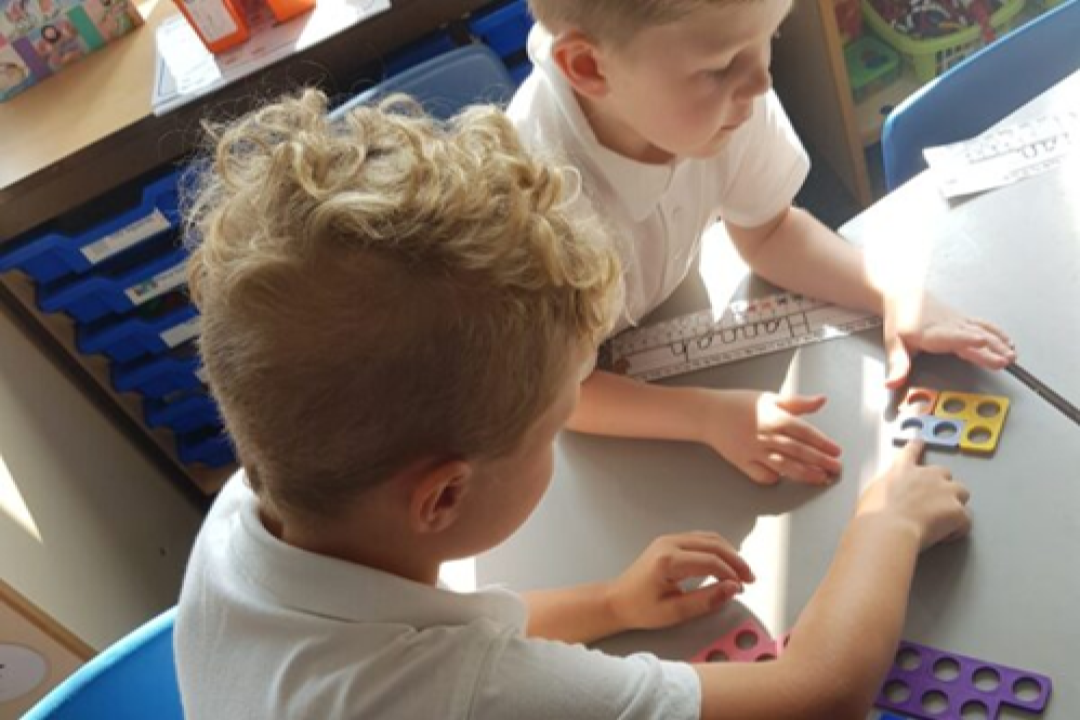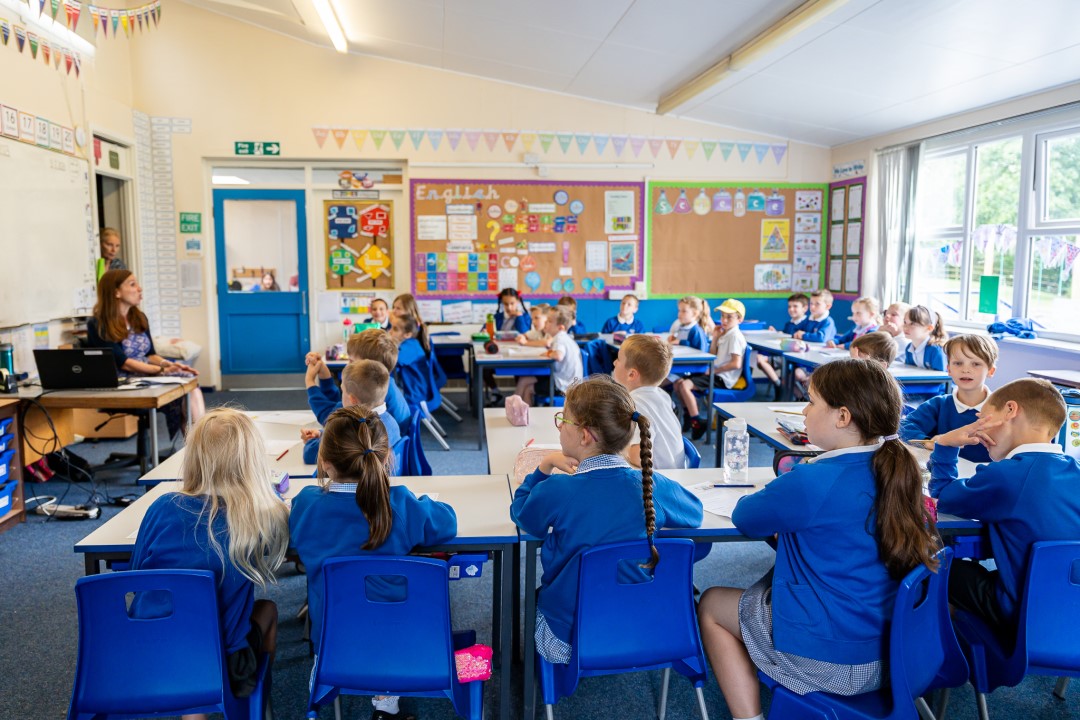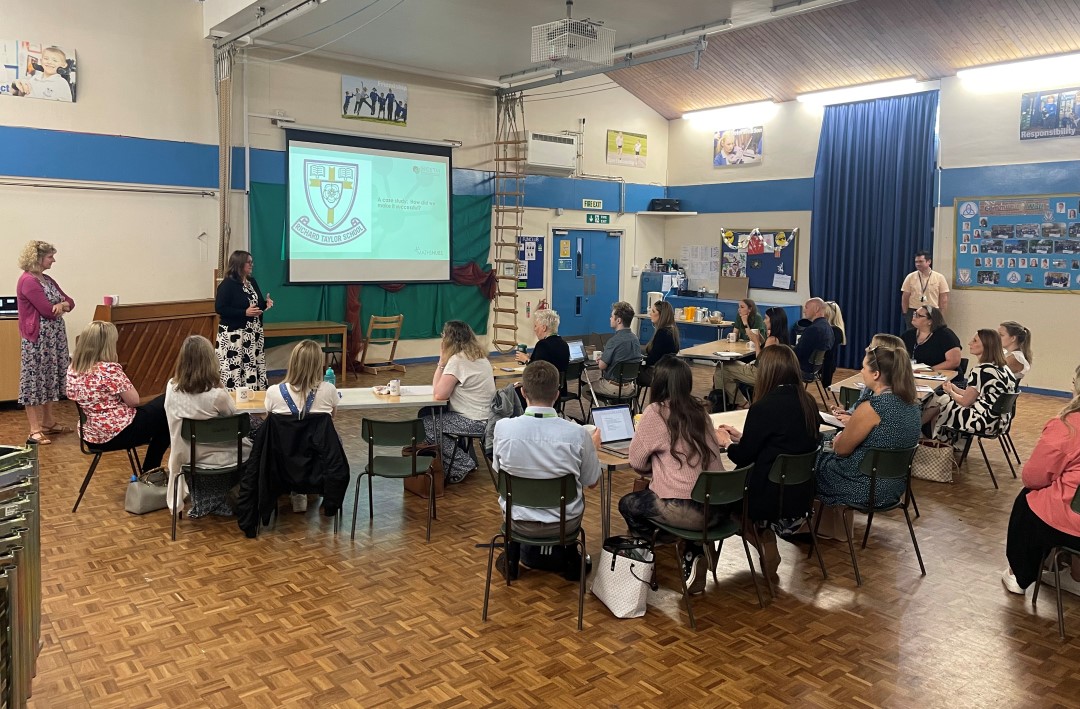Mastery and the mixed-age conundrum
At Richard Taylor Primary School, a clever combination of whole- and split-class teaching has led to pupils excelling in maths

The school’s context and mastery journey
Richard Taylor C of E Primary School, on the outskirts of Harrogate in North Yorkshire, is a larger-than-average school with just under 300 on roll, and lower-than-average Pupil Premium percentages. Many pupils are taught in mixed-age whole classes. The school is part of the Yorkshire Causeway Schools Trust, and has a PAN (published admission number – the maximum number of pupils a school can admit in a given year) of 39.
The school started its mastery journey over a decade ago when the first Maths Hubs formed in 2014. Since then, teachers have been embedding the Five Big Ideas, exploring what they understand by mastery (and, in true mastery style, what it isn’t!).
Embracing mastery from the inception of the Maths Hubs Programme had many advantages. The school’s headteacher and maths lead, Emma Crisell, was a Cohort 1 Primary Mastery Specialist and took part in the England-China exchange, where the value of teacher research groups (TRGs) became apparent, and a collaborative, transformative approach to lesson design was adopted back at Richard Taylor. Since 2014, the school has continued to engage with the Yorkshire Ridings Maths Hub through the Embedding and Sustaining phases of the Teaching for Mastery Programme.
The challenges of implementing mastery in mixed-age classes
“Our biggest challenge has been with Years 1 and 2, where we feel the maths curriculum works better taught separately. SLT have prioritised timetabling staff to support in KS1, to ensure there can be two inputs and support for independent practice. There also needs to be an investment of time for all staff working in the class. We have found this pays off as pupils move into KS2 with a secure foundation in maths, resulting in less intervention.”
- Emma Crisell, headteacher and maths lead
To develop quality teaching, the school has invested in ensuring teachers are skilled in knowing the foundation that new learning is built on. A collaborative planning approach, adopting the NCETM Curriculum Prioritisation materials across school, has helped teachers plan for continuity using the Five Big Ideas.
The school’s approach to maths
At Richard Taylor, teachers and leaders have developed the school’s culture and vision for maths, and have embedded a ‘can do’ approach to teaching the subject, which is based on the Five Big Ideas and the Essence of Mathematics Teaching for Mastery.
Seating pupils based on mixed prior attainment, carefully planning for the use of manipulatives, models and images, and using sentence stems and small steps have all ensured teachers keep more children on track with their learning. Teaching for mastery has also made oracy a focus. Pupil talk is of a much higher quality and all children are expected to participate in lessons.
Teachers plan for misconceptions and have a greater understanding of variation. Emma explains, ‘We don’t wait for the misconception to happen, but actively seek to expose it through unpicking what the concept is and what it is not.’
How Reception and KS1 maths classes are structured
| Class 1 | Class 2 | Class 3 | Class 4 | ||
| Reception | Reception/Year 1 | Year 1/Year 2 | Year 2 | ||
| 30 Reception pupils | 10 Reception pupils | 20 Year 1 pupils | 10 Year 1 pupils | 20 Year 2 pupils | 30 Year 2 pupils |
Emma summarises the structure of maths teaching that the school feels works best for both pupils and teachers:
Reception (30 pupils)
- Mastering Number input together after break and then in the areas of provision.
- Small-group work on a Friday and where necessary during the week.
Reception/Year 1 (20 of the youngest Year 1 pupils and 10 of the oldest Reception pupils)
| 0900-0915 | 0945-1030 | 1300-1315 |
| ALL pupils | Year 1 pupils | Year 1 pupils |
| Mastering Number Reception content | Main Year 1 maths lesson | Mastering Number Year 1 content |
| Reception pupils accessing provision or small-group work | ||
- Mastering Number (Reception materials) as a whole class, 9am Monday to Thursday. This also supports over-learning for the Year 1s.
- Mastering Number (Year 1 materials) for Year 1s, 1pm Monday to Thursday. Reception access areas of provision at this time.
- Year 1 main maths input (NCETM Curriculum Prioritisation Materials), 9.45am-10.30am Monday to Thursday and 11am Friday.
- Reception pupils rotate between small group work and provision on a Friday from 11am; content is taken from Mastering Number suggestions.
Year 1 and 2 (20 Year 1 pupils and 10 of the youngest Year 2 pupils)
| 0900-0915 | 0945-1030 | 1300-1315 | |
| ALL pupils | Year 2 input | Year 1 input | Year 2 pupils join pure Y2 class for Mastering Number |
| Mastering Number Year 1 content | TA presence to support small-group work and independent practice | Year 1 pupils small-group work with teacher | |
- Mastering Number (Year 1 materials) as a whole class daily at 9am. This also supports over-learning for the Year 2s.
- Year 2 join the pure Year 2 class for Mastering Number, 1pm Monday to Friday.
- Main maths input uses NCETM Curriculum Prioritisation Materials. The class splits into year groups; how this is arranged depends on the content of the lesson.
Usually in the main maths lesson, whilst the teacher is delivering content for Year 2s, the TA plays a recap game with Year 1s. Then they switch over: the teacher inputs with Year 1 and the TA does independent or small group work with Year 2. Smaller group work happens in the library, where the maximum group size is 10.
Whole-class teaching in KS2
At KS2, the school is embedding the NCETM’s two-year rolling programme using the Curriculum Prioritisation Materials, based on the DfE Ready-to-Progress criteria. This allows the whole class to be taught together. PPA is arranged so pairs of teachers can plan together and ensure coherence between the year groups. KS2 have Mastering Number sessions straight after lunch, supporting timetabling and ensuring it has a raised profile in the day.
Mastering Number
Staff understand the importance and role of fluency, and TAs are continuously developed alongside teachers. All classes across school have a Mastering Number session every day, on top of the daily maths lesson. This underpins the maths curriculum, and has the same priority and status as phonics.
Professional development
Investment in time is necessary for consistency. The in-house TRG model encourages teachers to have an ‘open door’ and to value the benefits of a collective approach, making small tweaks and refinements to lesson design along the way. This planned collaboration has been crucial to the implementation of the mixed-age two-year rolling programme across KS2.
The national Mastering Number sessions and local Maths Hub sessions are supplemented with online videos and resources, including the Mastering Number teacher guides which have been a valuable addition to teacher and TA professional development.
The profile of maths and teacher development continues to be high in the school. SLT ensure that all staff have opportunities for CPD, which motivates teachers and brings significant value. The maths subject lead, for example, attends the Sustaining Work Groups, the Year 6 teacher is part of the Years 5-8 Continuity Work Group, the school hosts a KS1 Mastering Number Work Group, and their headteacher is part of an RIWG looking at approaches to mixed-age teaching.
Considerations for KS1 split-class teaching
Organising and prioritising split year groups in KS1 requires a lot of thought, as there are many factors at play. What did leaders at Richard Taylor have to consider when structuring their maths classes?
- In-house and external professional development models which are sustained and valued are crucial.
- Prioritising staffing in KS1 must happen, to ensure pupils are ready to progress to KS2.
- Physical space is required to allow smaller groups to work.
- TAs must be well-trained, have time for communication, and understand the main teaching points and possible misconceptions.
- Continuity of TAs across the week in maths is important, to build on prior learning.
- Opportunities for teacher and TA discussion – through email/post its/annotated planning and discussion – needs to be built in.
- The teacher and TA should work with both groups across the week.
The impact of using the mastery approach
Emma knows that mastery is a journey, and asserts that it is one that is better with others. She also knows that the impact already seen at Richard Taylor is significant and widespread. The top five benefits of a mastery approach in mixed-age classes – using split-class teaching in KS1, whole-class teaching at KS2 and implementing the two-year rolling programme – have been:
- Reduced cognitive overload
- Higher retention levels of prior learning
- Higher levels of participation
- Improved pupil attitudes and beliefs
- Higher-quality talk
- Increased staff subject knowledge and confidence in lesson design
- Consistency of language, manipulatives and structures throughout school.
This success is recognised by Ofsted too, who reported, ‘Some classes include pupils from two different year groups, so leaders have skilfully adapted curriculum plans to meet the needs of pupils in each class. They have ensured that the important knowledge pupils need to know is planned and sequenced so that pupils build on prior learning each year.’

